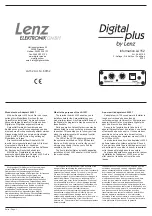
Intégration Guide_iUC150&iUC180
47/70
Copyright © 2012 Ingenico
900009816 R11 000 01/1223
All rights reserved
3.1.3 Operating system
Bootstrap
Bootstrap is resident.
The bootstrap very briefly takes control of the terminal after each power up to perform
the initialization and the self-test. Then, it automatically runs the operating system,
which in turn starts the applications manager.
Thus, the Bootstrap provides the following functionalities:
•
Memory and checksum self-test
•
Local download of the operating system if absent
•
Operating system authenticity check and start-up.
Operating system characteristics
The operating system is downloaded (locally or remotely) into the memory. It is
upgradeable. After a few fractions of a second following a power-up, the operating
system takes control. It checks the presence, integrity and authenticity of the system
components and application software present in the terminal.
The maintenance sub-system takes control in the following cases:
•
if no authentic application is present,
•
or, if a manual action is made by the operator during power up,
•
or, if it is activated by an application.
The maintenance sub-system ensures, among other things, the downloading of the
application software.
The operating system ensures the start of the multi-task core and then runs the
applications by making a set of services available to them:
•
Multi-task management: Availability of a pre-emptive real-time environment,
based on interruptions, events and mailboxes. This management enables
simultaneous processing, which improves the terminal’s performance.
•
Input/Output management: This is carried out under interruptions, generally in
buffered mode. Thus, the application developer enters a “conventional” C
context.
•
System alarm management: Certain incidents detected by the operating
system are recorded. They can be used later by the maintenance sub-system
during remote or local diagnostics.
•
Application alarm management: A number of incidents detected by the
applications can be saved by the operating system at their request. This
recording is used later as in the case of system alarms.
•
Application isolation management: The operating system provides the
mechanisms described in the section on software isolation and memory
protection.
Inter-application isolation is managed by the Memory Management Unit
(MMU).
•
Application download management: The operating system offers the
downloading services described in the « Software download » section.
















































